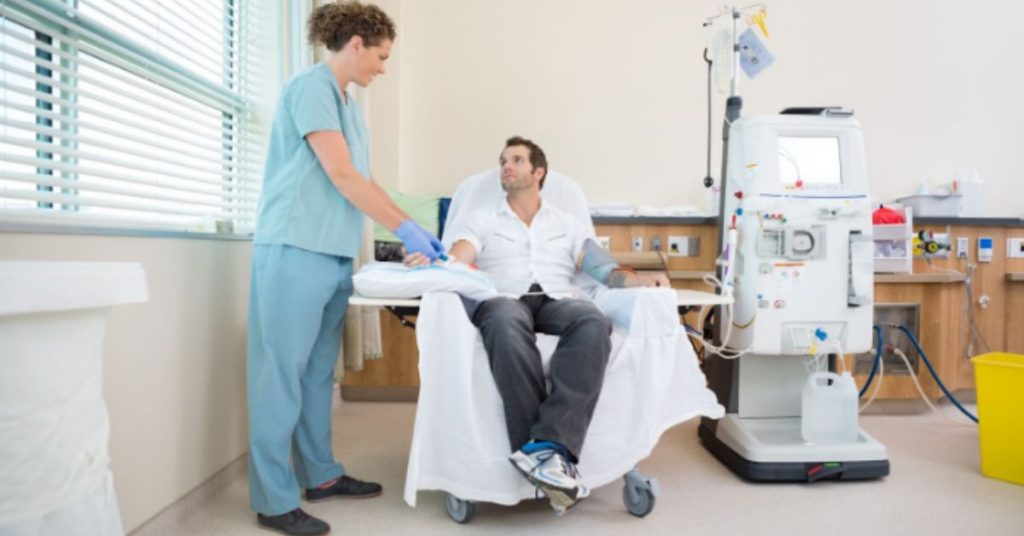How a Dialysis Machine Works

Dialysis is a common form of treatment for patients with end-stage kidney disease (ESKD). It is a life-prolonging measure that rids patients of the various toxins and wastes that build up in the body. In America alone, there are roughly 786,000 people living with ESKD, with approximately 558,000 of them currently on dialysis. These patients have several options for where to receive their dialysis treatment, such as Cassena Kidney Care. These companies’ goals are to offer an excellent patient experience, part of which includes giving patients insight into exactly what is going on with their treatment. With this in mind, knowing that the mechanism of the dialysis machine is complex, we are here to break down its inner workings.
What is the purpose of the dialysis machine?
The kidneys serve as the body’s filtration system. As blood circulates throughout the body, certain toxins and wastes, such as urea, build up. The kidneys’ job is to get rid of these wastes by filtering them out, which ultimately lets the body remove them by urination. When the kidneys are not functioning properly, as is the case in ESKD, these products can build up in the blood which causes a multitude of symptoms in the patient. Therefore, the dialysis machine is a way of filtering out the body’s toxins, by serving as a de-facto kidney.
How does the dialysis machine remove the blood and put it back?
There are different ways that the dialysis machine removes and puts back the blood from your body. Typically, this is done by the insertion of two IV catheters. However, for other patients, providers will place a “port,” which is a more permanent version of a catheter. One of the catheters removes the blood, which then enters the dialysis machine. The other will then place the blood back in your body, and this blood will have been freshly filtered.
What happens once the blood enters the machine?
After the blood enters the machine, it enters the dialyzer. The dialyzer is the critical piece of the equation; it is what ultimately does the job of filtering the blood, and ensuring that it is purified prior to being put back into the body. It is made up of multiple tubes that the blood flows through and has dialysate fluid residing on the outside of the tubes. This dialysate fluid contains a combination of pure water, electrolytes, and salts. As the blood goes through the tubes, there are tiny pores that through the process of diffusion, allow for the wastes to exit the blood and enter the dialysate fluid. The dialysate fluid, now filled with the unwanted waste, is then removed from the machine.
What are the other pieces of the machine? And what is with all the noise?
While the overall mechanism of the dialysis machine has been made clear, there are additional parts to it that are equally critical. For example, prior to the blood entering the dialyzer, there is a syringe that places a blood thinner medication, called heparin, to mix with the blood. When blood moves through the body or the machine’s tubing, it has a tendency to clot. These clots can then travel to the lungs, heart, or brain, and cause devastating consequences. To prevent this, heparin is added to the blood, which decreases the ability of the blood to clot. Further, prior to being put back into the blood, there is an “air trap” mechanism, which prevents air bubbles from entering the bloodstream. As for all the different noises and alarms, the machine is constantly monitoring the levels of wastes in the blood, dialysate fluid, and pressures. If any of these are out of range, the machine will alert the staff so that they can correct them.
Dialysis with Cassena Kidney Care
Cassena Kidney Care is a leader in our field, and we are dedicated to helping you through your dialysis journey with the latest technology in treatments and a full-service experience that guides you throughout the entire process. We have multiple treatment centers in New York, and a new location coming soon in Norwalk, CT. With our team of dedicated professionals and the latest technology in dialysis treatment, we guarantee each patient will receive the best comfort, care, and results the industry has to offer. Visit our website and schedule your first visit today.